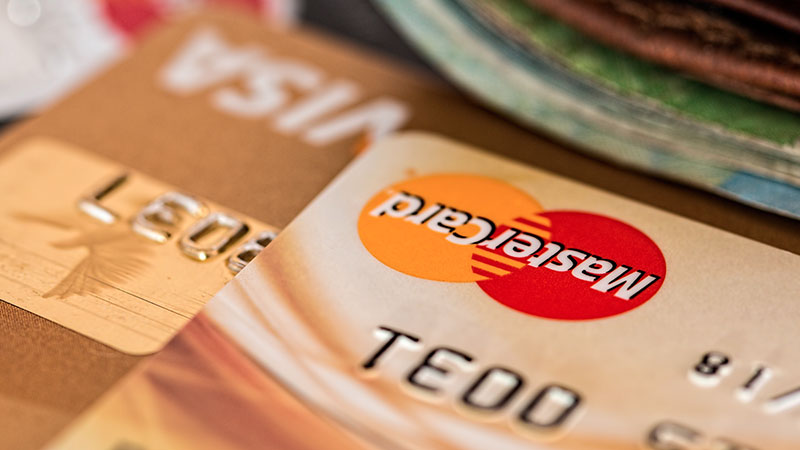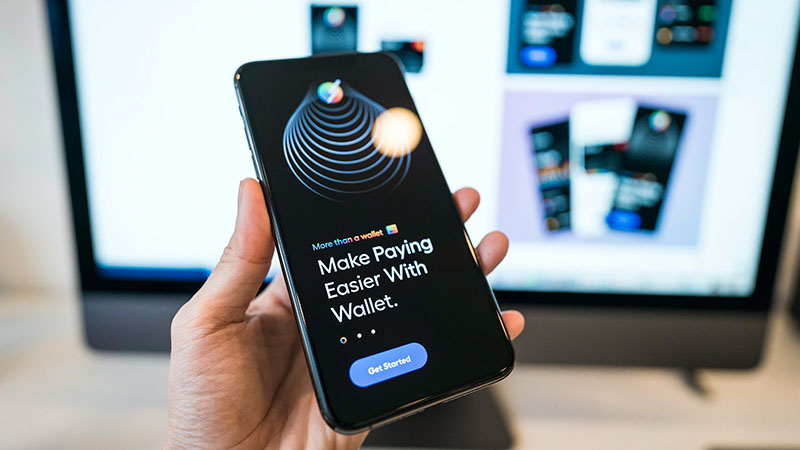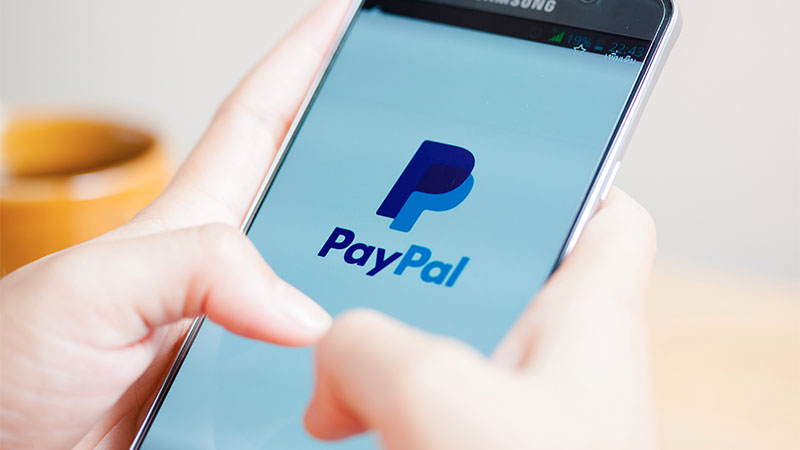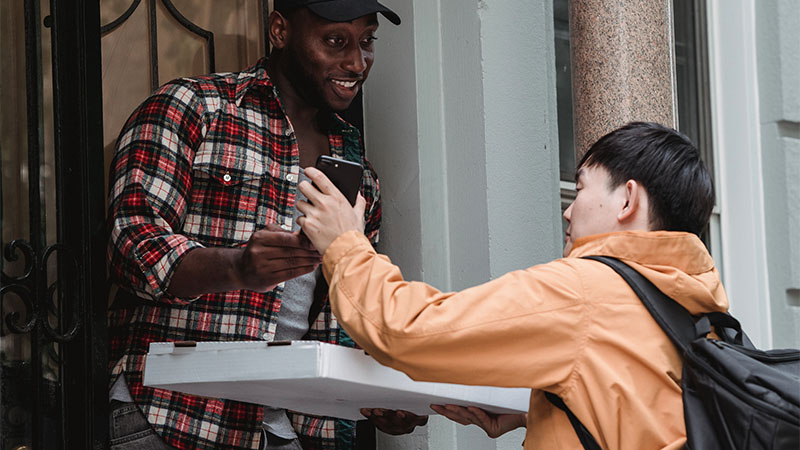Grow your business with the Discover newsletter
Logistics advice & insights straight to your inbox
Subscribe now
If you’re an e-commerce seller, there’s an important statistic you should know: online shoppers are 70% more likely to finalize a purchase if their preferred payment method is displayed as an option at checkout1.
That’s a significant number. By the time your customers have reached the payment stage on your e-commerce site, you’ve already done much of the hard work of engaging them with your brand. Yet, if you’re not offering an adequate selection of payment options, you risk losing a vast number of them at the final moment – i.e. the dreaded cart abandonment.
To secure the most sales, you need to ensure your site has capabilities to support those payment methods which are most popular with online consumers. Of course, there are the obvious ones – think credit cards and PayPal – but the fast expanding “buy now, pay later” services are expected to quadruple by 20262.
Add in the fact that, if you’re selling to international markets, customers’ preferences for payment methods vary from country to country, and it can suddenly seem a little overwhelming knowing which ones to incorporate into your e-commerce checkout. Luckily, we’ve done the research for you…read on for a breakdown of all you need to know.

As an e-commerce merchant, you should be offering your customers payment by credit card as standard. Globally, credit cards are the second most popular payment method, preferred by over 22% of the population3 – although their popularity is beginning to wane as more shoppers switch to digital wallets and Buy Now Pay Later options.
As credit cards are regulated by compliance standards, they offer both buyer and seller reassurance that their transactions are secure. Many shoppers are also incentivized to spend on credit cards to have access to their bank’s reward programs.
Tip:
Stripe4 is one of the market leaders for processing online merchants’ credit card transactions. It’s a fast and easy-to-implement payment method, and offers competitive rates for small businesses. The platform also has a wide range of additional features including a customer interface toolkit, financial reporting, and buy buttons for mobile apps.
Digital and mobile wallets (also known as eWallets) accounted for 44.5% of global e-commerce payment transactions in 2020, but by 2024, this share is set to increase to 51.7%, making it the most popular online payment method worldwide5.
Digital wallets act like a prepaid credit account, storing the customer’s personal data and funds. This saves them the hassle of inputting all their bank account details to complete an online purchase; instead they are redirected from the e-commerce site’s checkout to the digital wallet’s page where they can simply log in with their existing username and password to conclude the purchase.
At this point, it’s worth looking at the leading causes of e-commerce cart abandonment:
It’s clear that long and complicated checkout processes, and users having to create an account, are responsible for many customers abandoning their purchases altogether. This is why digital wallets are your saving grace, allowing customers to check out quickly using an already existing account.
Digital wallets are particularly handy for those shopping on mobile, where a smaller screen can make the prospect of filling in multiple details particularly unappealing.

One of the most popular digital wallets, PayPal7 had over 400 million registered accounts as of Q2 20218, meaning your customers are likely to be familiar with it. It allows users (on both mobile and desktop) to send or receive payments across the globe instantly by simply entering their email address and account password. With a presence in over 200 countries, it’s a must for e-commerce businesses selling to international markets.
Research has shown that websites with PayPal checkout convert at an 82% higher rate than those without it9.
It wouldn’t be a complete e-commerce article without a mention of the sector’s giant, Amazon. Amazon Pay10 is the marketplace’s online payment processing service. Third-party retailers can let their customers checkout with their Amazon Pay account to save them having to fill in lengthy payment details.
Considering 93% of mobile shoppers already have an Amazon account11, the appearance of the Amazon Pay button at your store's checkout connects your site with a name your customers already trust.
If your customers are shopping via mobile, chances are it’s on an iPhone, thanks to the device’s dominance of the market. Thus, it makes perfect sense to offer Apple Pay12 at your checkout. It uses fingerprint or facial recognition, making it one of the most secure digital wallets out there, and the convenience to your customers of checking out with a single touch or glance means they’re less likely to abandon their purchases. Apple Pay comes ready installed on Apple phones, iPads, watches and anything else that uses the iOS operating system.
Let’s not forget Android users. Google Pay13 allows them to make payments online and in-app with Android phones, tablets, or even watches by connecting to the payment cards they have on file in their Google Accounts. As with Apple Pay, there are no fees for merchants – a significant advantage over PayPal and Amazon Pay which do charge.
Alipay14 has created several local versions of its digital wallet service tailored for various global markets by opening up technology to local partners. With over 1.2 billion users worldwide15, that number alone should be reason to sign up.
It is the most popular digital wallet service in Asia, and has a particularly strong presence in China. Consumers from the Chinese mainland can use Alipay in 56 overseas markets, so the payment platform is a must for any online retailer looking to sell to the thriving Chinese market.

BUY NOW, PAY LATER
“Buy now, pay later” (BNPL) options are becoming increasingly popular with online shoppers, so if you’re looking to increase your conversion rate, an instalment service might be worth considering.
BNPL services offer flexible, consumer-friendly payment options for both cash-strapped younger shoppers and, increasingly, for the cost-savvy boomer generation. A recent survey in the US17 found that over 60% of Gen-Z (aged 18-24), millennials (those aged 25-40) and Gen-X-ers (aged 41-56) made at least one BNPL purchase over the past year. However, over 40% of the over 55 group had also used this option – an increase of almost 100%.
BNPL services enable customers to pay for a product in instalments instead of the entire cost up-front. Many of the leading BNPL providers don’t charge customers interest, incentivizing them to buy – that $80 purchase suddenly becomes a lot less intimidating when broken down into four interest-free instalments of $20.
In fact, a recent consumer study found the three most-frequently cited reasons for using BNPL services are: 1) To avoid paying credit card interest (one reason for the growth in older online shoppers) ; 2) To make purchases that otherwise wouldn't fit in my budget; and 3) To borrow money without a credit check18.
In general, this is all good news for e-commerce merchants. BNPL incentivizes customers to buy, boosts conversion rates, and increases average basket sizes by 20–30%19. It will also drive up your customer lifetime value – once your customers know you offer a BNPL option, they’ll come back to you for their next big-ticket purchase.
Beware though, there are some downsides. Increasingly, these services are attracting the interest of legislators and consumer groups who are asking for greater regulation. And because these services are consumer-focused, you’ll have to hand over a percentage of sales generated. You’ll need to do some cost scenarios to find out if the benefits to your business are likely to outweigh the fees.
Let’s look at a few of the BNPL options out there:
This Swedish fintech giant is the current titan of the European e-commerce market, with a fast-growing presence in the US and Australia, too. Klarna20 offers customers a range of payment plans including delaying payment for 30 days, splitting payment into monthly instalments, or spreading the costs equally over three months.
Participating merchants pay the provider 2–6% commission plus a fixed fee for every transaction, yet, the company argues, the fees will be far outweighed by the extra sales generated by offering customers Klarna at checkout. “Being able to offer a payment method that provides an easy, short-term, no-interest solution – without requiring a formal credit agreement with these customers – is great for your business.”21
Clearpay (known as Afterpay in some markets) also has an impressive global customer base. The lender divides a customer’s total purchase amount into four biweekly payments, with no interest or fees (provided the payments are made on time). Like Klarna, Clearpay22 throws around plenty of impressive statistics about the increase in conversions and basket size that the service can bring sellers – they will just have to weigh up whether the 4-6% merchant fee is a worthy investment.
Not wanting to be left behind, in 2020 PayPal launched its own BNPL solution, “Pay in 4”, in the US, followed shortly after by “Pay in 3” in the UK (the differing instalment numbers are due to how consumers in each region receive their paychecks). The services act as interest-free loans that let customers pay back their purchases via their regular PayPal accounts.
Crucially, PayPal will not charge any additional fees to merchants who already use its payments system, making the Pay in 3 and Pay in 4 services an attractive alternative to the likes of Klarna.

As the name suggests, cash on delivery is a transaction where the recipient makes payment for goods at the time of delivery. It may seem an unusual concept to consumers in the West, but in a large part of the world it’s still an everyday process.
In fact, the “cash” part has evolved to include other forms of payment. Some of the leading online marketplaces have capabilities to support digital payment on delivery options. Amazon, for example, offers Pay on Delivery for all items that are Fulfilled by Amazon. A delivery agent will take a package to the customer’s door, and then wait whilst the customer either completes an SMS pay link-based payment using their credit or debit card, or hands over cash.
There are signs this payment method is on its way out though. By 2024, cash on delivery is forecast to be responsible for just 1.7% of total global e-commerce purchases (down from 3.3% in 2020)23. As digital infrastructure in developing markets improves, online shoppers there are becoming more comfortable with paying at the time of purchase via credit cards or digital wallets. The pandemic and subsequent hygiene concerns have also nudged the exchanging of physical money out of favor. Still, in certain markets such as India, Latin America, and some parts of Africa, there is still demand, so do your research.
The more options, the better. Offer your customers a wide choice of payment methods at checkout and they’ll be more likely to complete the purchase.
International customers. Do your research to find out the most popular payment method in the market you’re selling to. And don’t forget to ensure your e-commerce website defaults to the local currency when displaying prices.
Keep it simple. “Guest checkout” and autofill will keep the checkout process quick and pain-free for customers.
1 - 2Checkout blog, June 2020
2 - EuroNews, December 2021
3 - Statista, November 2020
4 - Stripe
5 - Statista, November 2020
6 - Baymard Institute, 2021
7 - PayPal
8 - Statista, February 2021
9 - PAYMNTS.com, May 2018
10 - Amazon Pay
11 - Shift 4 Shop blog, March 2018
12 - Apple Pay
13 - Google Pay
14 - Alipay
15 - KrAsia, September 2019
16 - Big Commerce, Accessed February 2021
17 - Statista, September 2021
18 - Forbes, November 2020
19 - Scott Galloway data, Big Commerce, Accessed February 2021
20 - Klarna
21 - Klarna quote, Big Commerce, Accessed February 2021
22 - Clearpay
23 - Statista, November 2020